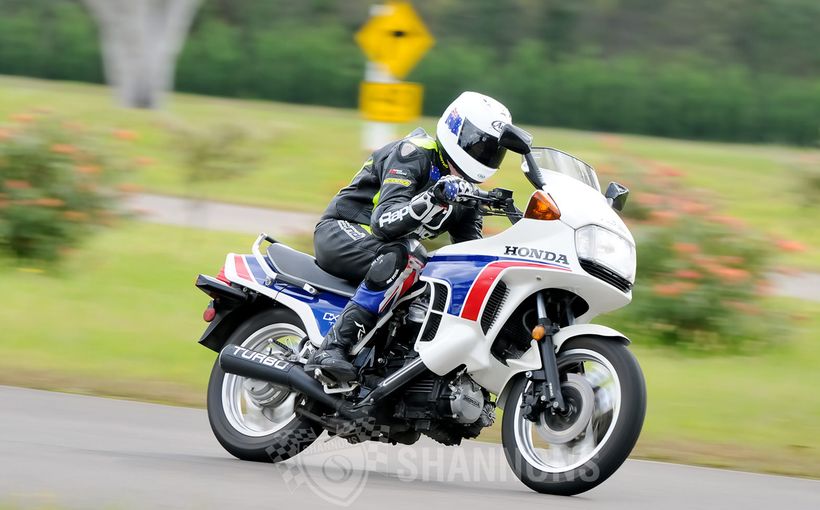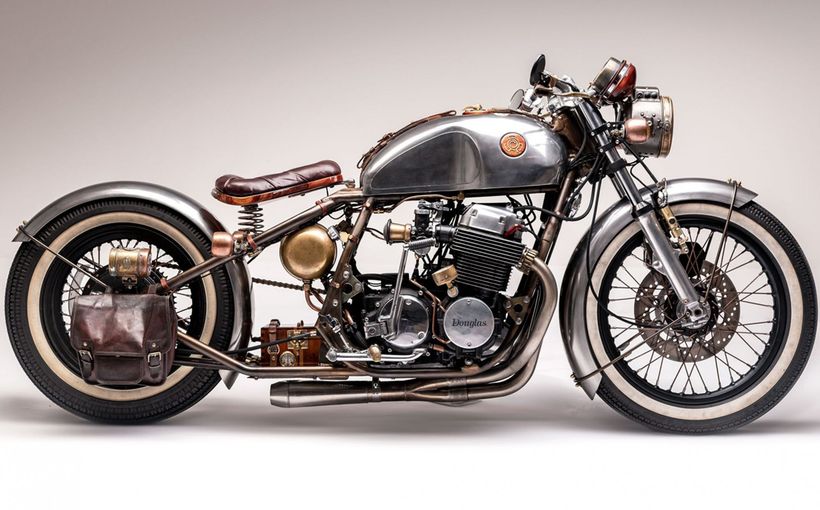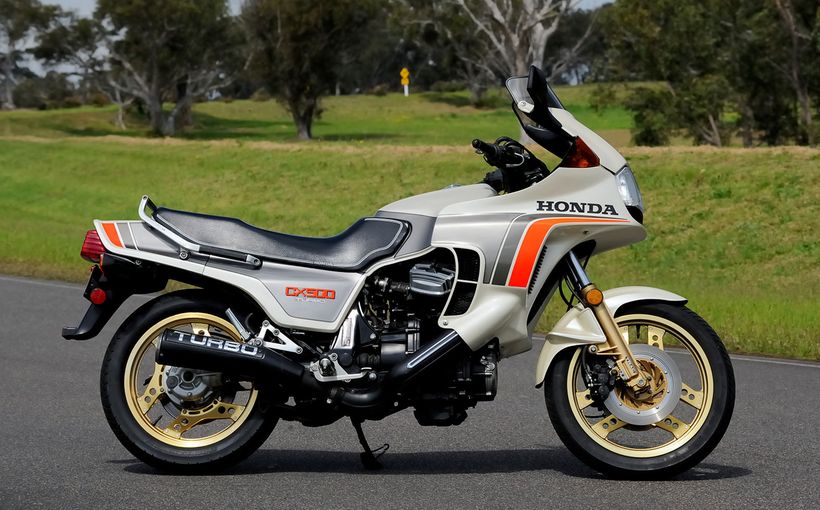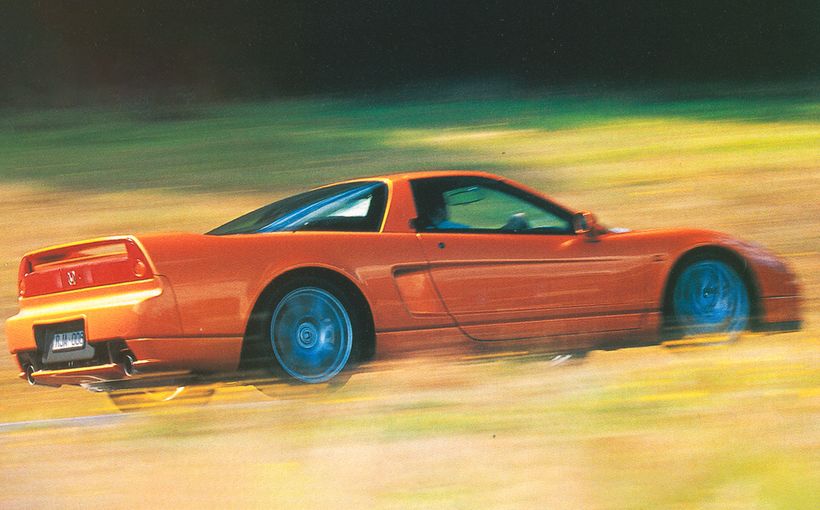Honda CBR1000RR Fireblade - Furious Firepower

Have you ever been “that guy”? You know the one I’m talking about — the guy who stands out from the crowd for all the wrong reasons. Perhaps you downed a few too many ales at a work party, or dropped the F-bomb at a kid’s birthday just as the music stopped. Or maybe you just got caught with your pants down (we’ve all been there). Well Honda’s CBR1000RR Fireblade was very close to becoming “that guy” in the superbike class.
Street-legal superbikes are peaking at the moment and any model that doesn’t have the full gamut of electronic rider aids simply gets left for dead ... or dacked in this case. For consumers, it’s bliss. We’re reaping the benefits of millions spent on race engineering and development as manufacturers try to keep pace with the constantly moving goal posts of MotoGP and WSBK, but for the marques it’s a tough pill to swallow. And there’s also the ever-tightening European emissions regulations to contend with.

Just a few issues back we saw Suzuki pull out all stops to resurrect its ageing GSX-R1000 with a fresh breath of variable valve timing to meet Euro 4 head on. It certainly needed it, but this unveiling put Honda squarely in the spotlight as the sole remaining superbike without a comprehensive suite of electronic rider aids. It’s been on autopilot since delivering the lean, mean Fireblade of 2008, which was the ninth version of a model lineage that began with the CBR900RR in 1992. The model has always had a well-deserved reputation for excellent handling, and this DNA has seen it continue to win races in the face of all odds. As a case in point, the outgoing model has just taken back-to-back National Superbike Championships here in Australia, with Goulburn racer Troy Herfoss at the helm. But it is fair to say the bike’s weaknesses are becoming harder to overlook, particularly in the power and technology stakes. In this modern era, massive horsepower figures and the electrical voodoo needed to manage them are the currency, so what better place to showcase the Blade’s new wares than the blindingly fast 4.445km-long circuit at Phillip Island in Victoria with not one, but three of Honda’s Factory Superbike riders in attendance.

In a gesture of kindness (or mercy), the test bikes were shod with Pirelli Supercorsa SP tyres, which are a vast improvement over the Bridgestone S21s fitted as OEM equipment. Even still, we had ample opportunity to test the efficacy of the new electronics package as we navigated cold track conditions and a persistent layer of mist, along with a variety of shades of duck shit that bordered perilously close to the racing line. I personally almost copped a Masked Lapwing (Google it) in the face exiting Turn 1 at a clip, and the birdlife was so prevalent around the circuit that at one stage we had to stop riding while some rather fat and recalcitrant trackside grazers where ushered away from the start finish straight at a section where most riders were seeing an indicated 280km/h on the Fireblade’s TFT dash. Incidentally, this large and MotoGP-derived full-colour unit comes straight off Honda’s $244K street-legal race replica, the RC213V-S, along with the throttle-by-wire (TBW) technology and Acceleration Position Sensor (APS) that have facilitated the CBR1000RR’s new swag of electronic rider aids. The TBW replaces the outgoing cable-operated system and opens up a whole realm of possibilities to meet emissions regulations, and manage the traction control (Honda calls it torque control), engine braking, power delivery, rider modes, and the cornering ABS system which now come standard.

Essentially this electrical conduit allows the ECU to modulate throttle body opening and engine RPM, with reference to data acquired from front- and rear-wheel acceleration sensors, to mitigate wheelies, stoppies or skids. It’s running the numbers every 10 milliseconds, which is about 30-40 times faster than you can blink, and unlike more antiquated mechanical systems which only react to losses in traction, this system can also predict when conditions are likely to overshoot pre-programmed parameters so it can intervene before things go tits up. Of course, that really depends on where you’ve set the TC at because there are nine levels (one being the least intrusive) as well as “off” to select from. There are also five “power” levels (1=Sport : 5 = Comfort), three levels of engine braking (1 being the least and 3 the most), and three rider modes (Track, Winding and Street) with a further two custom modes that you can program yourself.
THE OTHERS
Let’s look at how the Blade measures up against its opposition


Another key component of this “artificial intelligence” loop is Bosch’s inertial measurement unit (IMU), which is really just a high-tech gyro about half the size of your mobile phone that resides under the seat unit. It adds another dimension of data for the ECU to digest that really amplifies the potential for traction control, electronic suspension units (only available on the SP model — see breakout), and ABS braking systems. As the bike moves from side to side while cornering, or back and forward under acceleration and braking forces, the IMU measures the angle of trajectory on five planes of motion (X, Y, Z, roll and pitch), and this data is then cross referenced with information coming from the acceleration sensors on both wheels along with your throttle position and braking pressure.
Sounds complex, doesn’t it? Well it is, but the application of this new electrickery has been so well designed and meticulously developed that you don’t really even notice it saving your arse. Certainly you know it’s there because you’re well aware that you don’t usually possess that kind of riding talent, and you remember using the intuitive left switchblock control to adjust the settings before heading out on track, but the way in which it increases safety and overall enjoyment just seems to blend into the experience. You see, this new world order is all about lightning-quick computation times that ensure you can ride more safely and faster than ever before, without the superhuman reflexes needed to control massive amounts of torque and power smooshing rubber into tarmac. And it’s hard to put a price on that added peace of mind when you’re flying an engine on two wheels that can reach speeds just shy of 300km/h.

There are also a few external changes, the most obvious of which relates to the minuscule front fairing that now resembles a 600cc Supersport nose cone. Interestingly, it still seems to offer surprisingly good aerodynamics at high speed, even for lanky six-footers, and also houses a twin LED headlight with both bulbs blazing full-time that is something new for this model. In a wise move, Honda has retained the sweet ergonomics of the old Blade, albeit with a few nips and tucks. The tank has been scalloped out on either side by 15mm so you have a better gripping point with your knees, and this comes in handy when you twist the throttle to the stop with the power set to level 1. As your pace starts to hot up coming out of corners, the ‘bars may give a slight snap as the electric steering damper arrests the unavoidable tank slappers that occur when 193 horsepower try to escape through the rear wheel, but like its predecessor this bike rarely feels unstable. It tends to become more planted with speed, and the turn-in rate is so quick that it requires some recalibrating of your brainwaves to dial in exactly how much later you can initiate a steering input while still staying on the correct line to the apex. Rake and trail have remained the same, but the wheelbase has been extended by 5mm for stability, and seat height is jacked up by 12mm to 832mm, which has implications for rear ride height and weight bias that may contribute to the new model’s rapid rate of turn.
The braking package has also been revised, with anti-rear-wheel lift added and cornering ABS to assist when braking hard into the turn. The Tokico front calipers and Nissin rear caliper are both fitted with special performance-oriented pads that are extremely responsive and very powerful for base-model OEM. All up this new braking system shaves a massive 3kg in weight and there have also been revisions to the frame, swing arm and engine design that further stiffen the chassis, and centralise mass, for faster changes of direction.

After a good thrashing on track, there’s little doubt this new and improved Fireblade is easy to ride, confidence-inspiring, and buff enough to do battle with the fierce competition. It slashes 15kg of flab from the outgoing model and churns out eight extra kilowatts of mumbo, but this improved power-to-weight ratio glosses over the biggest attribute of the Blade which concerns the contribution that electrical rider aids have made to the already sweet handling chassis and exceptional build quality. It’s not so much a matter of just adding computers, but programming them in harmony with the other core elements of chassis and engine to reveal the best of both rider and machine. In this Honda has turned a capable race-proven package into a supremely fast, yet easy-to-ride superbike, however it also comes at a premium.
This year the blade has copped a price hike of almost $5.5K, which is a serious dollop of filthy lucre in anyone’s book. Then there’s the issue of the up/down quickshifter with autoblipper. According to Honda Australia, this optional extra should be available for between $650-$690, but it would have been nice to see this item fitted standard given the massive gain it delivers in comfort and track performance.

Colour options are limited to the rather plain-looking Victory Red or Matte Ballistic Black Metallic in the base model, with the spectacularly good-looking tri-colour version reserved for SP models. And the new model also drops 1.5L of fuel capacity, and still doesn’t have a fuel gauge or range calculator despite the large and versatile TFT dash.
Overall though, this is a ground-breaking step in the model lineage and one that Honda has every right to be chuffed about. If you’re a trackday warrior in pursuit of devastatingly fast lap times, then the all-new CBR1000RR Fireblade has next-level firepower and could be the weapon you’ve been waiting for.

BUT WAIT, THERE’S MORE!
Wanna stand out from the crowd? Cop this lot…
If you don’t want to settle for being the grey man, you can opt for the tri-colour SP model, which comes in at $6000 more than the base model. Two of these special models were present at the CBR1000RR launch, but Honda Australia made the sensible choice of keeping those keys in the hands of professional racers Troy Herfoss and Bryan Staring. We can only guess that these limited-edition units will be theirs to test as they transition from the 2016 model in the campaign of the Australian Superbike Championship (ASBK).
The SP model comes with a 43mm NIX30 Öhlins Smart-EC front fork that is fully adjustable and capable of being switched over from manual operation to semi-active. These settings are not described using the gobbledygook of suspension technicians, but with the simple terms ‘General’, ‘Brake’, ‘Corner’ and ‘Acceleration’.
A +/- five-level system is used to make adjustments which amount to a very intuitive entry into the black art of suspension tuning. The electronic suspension makes up the bulk of the SP’s added expense, but there’s also a total weight saving of 1kg over the base model thanks to the titanium fuel tank, Li-Ion battery, single seat, lighter aluminium wheels, and the same upgraded radial-mount Brembo Monobloc calipers that grace the all-singing, all-dancing SP2 model.
This third model is a homologation special that was released specifically to provide a more versatile platform for WSBK competition in an effort to provide their ex-MotoGP factory riders a fighting chance of winning. It has larger intake (31.5mm versus 29.5mm on the standard and SP model) and exhaust valves (25.5mm versus 24.5mm), 2.5mm shorter and 8gm lighter piston pins, a stiffer swing arm and high-lift camshafts (28mm versus 26mm). The SP2’s gold Marchesini forged aluminium wheels not only look the part, they also help shave off another kilogram of unsprung mass and allow the SP2 to weigh in at just 194kg.

SPECS: 2017 CBR1000RR FIREBLADE
ENGINE
Type: Liquid-cooled, DOHC, 16-valve, inline four. Variable torque control, engine braking, power delivery and rider modes
Capacity: 999cc
Bore x Stroke: 76mm x 55mm
Compression ratio: 13.0:1
Fuel system: PGM-DSFI electronic fuel injection
PERFORMANCE
Claimed maximum power: 141kW @ 13,000rpm
Claimed maximum torque: 114Nm @ 11,000rpm
TRANSMISSION
Type: Six-speed, constant mesh
Final drive: Chain
Clutch: Wet multiplate clutch
CHASSIS AND RUNNING GEAR
Frame type: Aluminium twin-spar
Front suspension: USD Showa 43mm Big Piston fork fully adjustable, 120mm travel
Rear suspension: Monoshock Unit Pro-Link with Showa Balance Free Rear Cushion (BFRC), fully adjustable, 138.2mm travel
Front brakes: Twin 320mm discs, four-piston Tokico calipers, ABS
Rear brake: Single 220mm disc with two-piston Nissin caliper, ABS
Wheels: Cast aluminium
Tyres: Bridgestone S21, front 120/70-17, rear 190/50-17
DIMENSIONS AND CAPACITIES
Rake: 23.2?
Trail: 96mm
Claimed wet weight: 196kg
Seat height: 832mm
Wheelbase: 1405mm
Fuel capacity: 16 litres
ETCETERA
Price: $22,499 plus on-road charges
Colours: Matte Ballistic Black Metallic and Victory Red
Bike supplied by: Honda Motorcycles Australia, motorcycles.honda.com.au
Warranty: 24 months, unlimited kilometres










